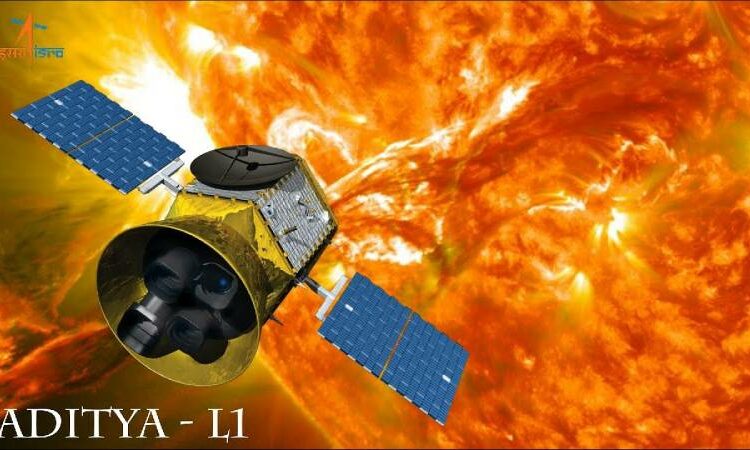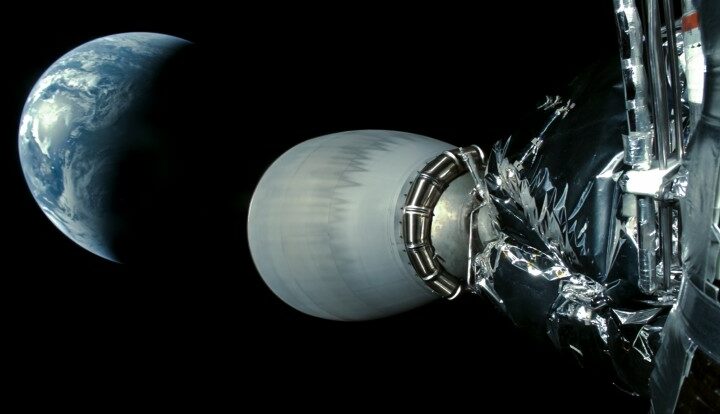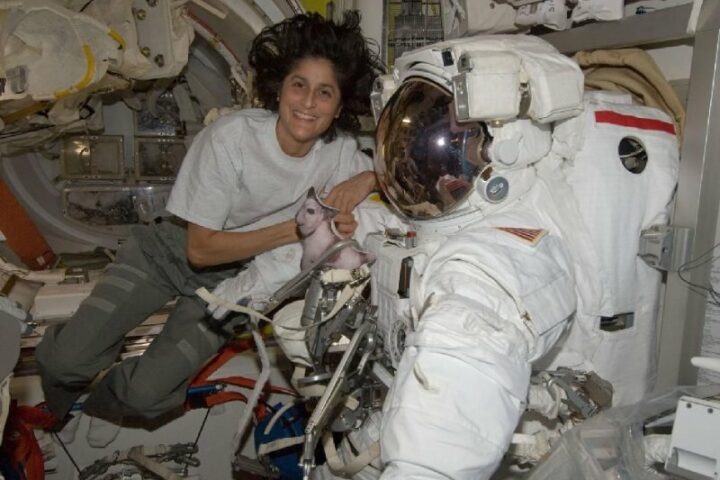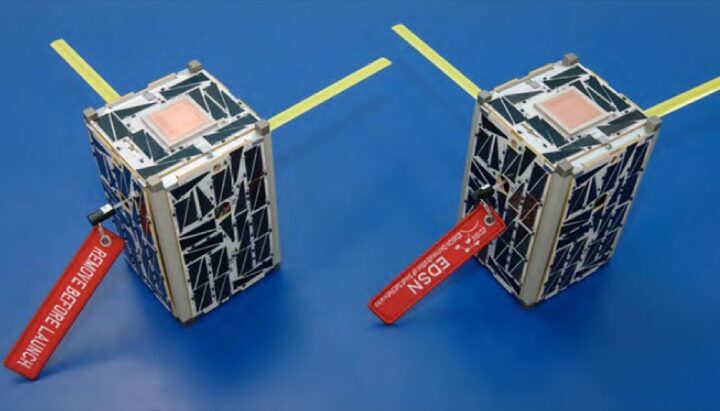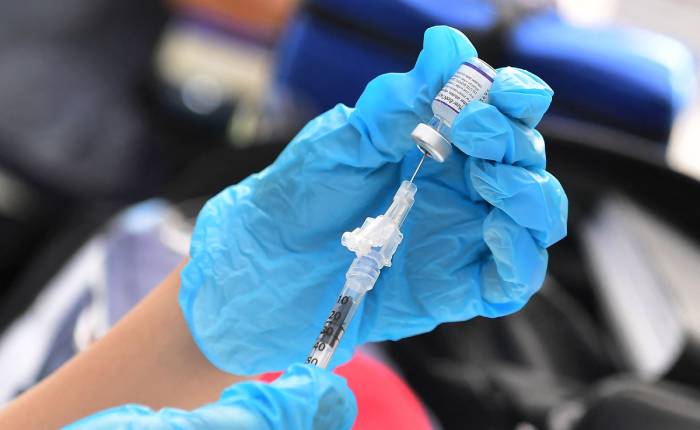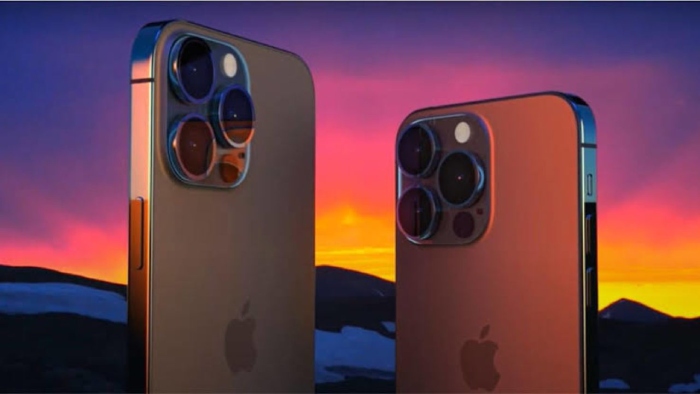The Indian Space Research Organisation (ISRO) is the company that runs the solar observatory Aditya-L1.
Five of the seven different scientific payloads that will be used by the solar observatory to track the sun were created by the ISRO. It will carry out this action from its location at Lagrange Point 1, a gravitationally stable location in the Earth-sun system that is roughly 1 million miles (1.5 million km) from Earth and where a spacecraft can maintain stability in regard to both bodies. The mission is referred to by ISRO as a “satellite dedicated to the comprehensive study of the sun.” While “Aditya” in the mission’s name means “the sun” in Sanskrit, the L1 suffix in the mission’s name relates to this location.
For the remainder of its mission, which is expected to last around 5.2 years, the Aditya-L1 spacecraft won’t get any closer to the sun than this. Instead, it will observe our star from a distance of about 1% of the distance between the Earth and the sun while doing research on it. According to ISRO, placement at L1 will give the spacecraft an uninterrupted view of the sun free from eclipses or occultations.
The corona, the sun’s atmosphere, and the photosphere, its surface, will be studied by Aditya-L1. The information it collects might help in resolving unanswered questions about the sun, such as why the corona is much hotter than the photosphere while being about 1,000 miles (1,609 km) farther from the sun’s main source of heat, the nuclear fusion that occurs at its core.
The mission will be able to examine Earth’s magnetosphere and how it responds to charged particles that travel towards Earth from the sun in solar winds and coronal mass ejections (CMEs) thanks to the planet’s close vicinity. The Indian mission will also research L1’s near environment in space.
WHEN DID ADITYA-L1 LAUNCH?
On September 2, 2023, at 2:20 a.m. EDT (0620 GMT, 11:50 local India time), the Aditya-L1 spacecraft launched from the Satish Dhawan Space Centre in Sriharikota, an island off the coast of the Bay of Bengal. It was carried by a Polar Satellite Launch Vehicle (PSLV).
The PSLV successfully deployed Aditya-L1 into low-Earth orbit 63 minutes after launch. The manoeuvre was followed by a trans-Lagrangian1 insertion. After launch, the trip to L1 is expected to take around 110 days. During this period, five further manoeuvres will be carried out to give the spacecraft the velocity it needs to arrive at this gravitationally stable location.
Aditya-L1 will do a further manoeuvre once it has reached L1 in order to “bind” itself to an orbit around the place. According to the ISRO, the orbit will be created about 127 days after launch and will be asymmetric in shape, roughly perpendicular to the line connecting the sun and Earth.
Aditya-L1’s successful launch represents the conclusion of more than 15 years of preparation. The Advisory Committee for Space Sciences (ADCOS) first proposed the project in January 2008 as a low-Earth orbit mission for a 400 kg (880 lb) satellite. Over the course of 15 years of planning, the mission’s scope greatly increased, and in July 2019, the mission was given a new name—”Aditya-L1″—to represent this expansion.
WHAT WILL ADITYA-L1 DO?
The launch mass of the Aditya-L1 spacecraft was 3,252 pounds (1,475 kilogrammes). It is a honeycomb sandwich-shaped satellite with a cube shape. According to the European Space Agency, its primary body measures 2.9 feet by 2.9 feet by 2 feet (89 cm by 89 cm by 61.5 cm).
When the Aditya-L1 sets out on its journey, it is folded. The spaceship will have two wings with two solar panels that are each 3.9 feet by 2.7 feet (120 cm by 81 cm) when they are fully extended. These will aid the lithium-ion battery of the spacecraft in supplying power to Aditya-L1. A miniature GPS receiver that gives real-time information on position, velocity, and time will be used by the ship to track where it is.
Seven scientific instruments, each with a unique function, totaling a weight of about 538 pounds (244 kg), will be carried on the upper deck of the Aditya-L1 spacecraft as its payload. The equipment used by Aditya-L1 and its purposes are as follows:
Magnetometer (MAG)
The magnetic sensor MAG created by the Laboratory for Electro Optics Systems (LEOS) will detect the strength and direction of the interplanetary magnetic field surrounding Earth. It will be mounted on a boom on the sun-facing side of Aditya-L1. MAG will also look at things like CMEs and gauge how they affect the space environment right around Earth. At L1, it will also find waves in solar plasma.
Visible Emission Line Coronagraph (VELC)
The solar corona will be studied by VELC at close proximity to the sun’s limb. Coronal magnetic field tests, CME detection, and the identification of so-called “coronal loops”—plasma outflows from the sun’s upper atmosphere—will all be part of this. This will be done with the intention of figuring out the mechanism by which the corona becomes significantly hotter than the underlying photosphere.
High Energy L1 Orbiting X-ray Spectrometer (HEL1OS)
Solar flares are bursts of electromagnetic radiation from the sun that HEL1OS will focus on, studying both thermal and non-thermal emissions that happen as flares develop. In order to understand how these highly energetic emissions are connected to processes that speed up particles like electrons orbiting the sun, it will also analyse the pulsations of X-rays that occur during solar flares.
Solar Ultraviolet Imaging Telescope (SUIT)
The SUIT ultraviolet telescope, created by the Inter University for Astronomy and Astrophysics, will capture images of the solar disc. Understanding how energy is transferred from the photosphere to the corona will be the goal of study. Additionally, it will look at the wavelengths at which solar flares emit the most energy as well as how distinct flare phases manifest themselves at various levels of the sun’s atmosphere.
Solar Low Energy X-ray Spectrometer (SoLEXS)
To learn more about the corona’s features, SoLEXS will monitor the flux of X-rays from the sun at L1. Again, the goal of this investigation will be to identify the process causing the solar corona’s heating. SoLEXS will also examine the dynamics of solar flares, ranging from the weaker sub-A class flares to the most potent X-class flares.
Solar wind particle experiment by Aditya (ASPEX)
The solar wind, a constant stream of charged particles from the sun, will be measured by ASPEX at L1. This will aid in identifying the processes that accelerate solar wind particles and determining their origins.
Aditya’s Plasma Analyzer Package (PAPA)
The two PAPA sensors will also examine the solar wind, determining its composition and how its energy is distributed. It will look into the protons’ and particles’ temperatures at various locations in that stream of solar plasma, as well as the velocity of electrons in the solar wind.
- Android 15 Introduces New Features for a Smarter, More Productive Workplace - October 21, 2024
- Porsche’s New 911 Generation Gets Its First GT Model: Reveal Date Announced - October 19, 2024
- Android 15 Officially Launches on Pixels: What to Expect - October 16, 2024

